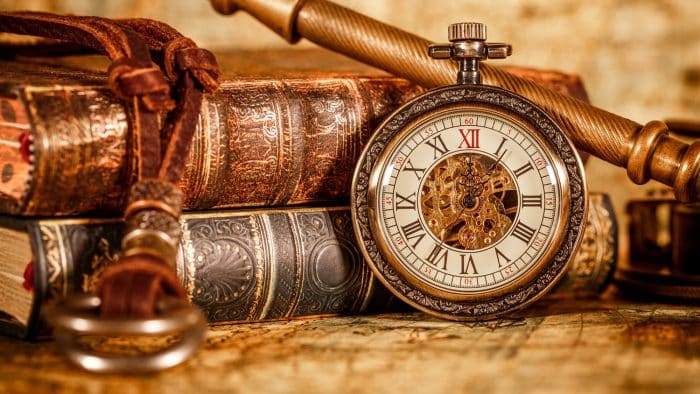Is it just an old clock or an antique timepiece?
What are we expecting to see when we are looking for antique clocks? Nowadays we use the term ‘antique’ rather loosely to describe items with quite a few years under the belt. However, there are some official definitions which specify what an antique is. According to the United States Customs Service it is traditionally an item that is at least 100 years old. On the other side, Wikipedia and Collins dictionary describe it as a valuable piece due to its aesthetic or historical significance. In summary, any beautiful timepiece that was created at least a century ago can be referred to as an antique clock. This is of course if you want to stick to the guidelines.
When the clocks become popular in home décor
The history of timekeeping devices dates back to around 6th century BC when ancient Egyptians invented the sundials. These were later followed by the water clocks that have been used as the interior items but in majority did not serve any decorative purpose. In the 14th century the catholic monks invented the weight mechanism. The size of the first mechanical clocks however was restricting its use mainly to churches and town halls.
The change came in the 15th century with the invention of a spring mechanism and modifications of the older gear systems. This advancement enabled the craftsmen to build much smaller portable timepieces. The popularity of clocks rose and as a consequence, designers started to pay much more attention to the aesthetic side of the design to win new clients. People started to purchase clocks not only to tell the time but also to decorate and add value to their interiors.
The period between the 15th and 19th century saw a huge improvements in clock mechanism (invention of the pendulum). It was the time of creation of the most elaborated and artistic designs of all times.
Lantern and long-case clocks of the 17th century
According to John Mighell, clocks have been an integral part of English domestic furnishing since at least the 17th century. The earliest household clock produced in UK was the lantern clock. English craftsmen based its design on the timepieces imported from Europe. The lantern clock took its name from its resemblance to a household lamp. It also needed to hang from the wall to allow the weights to descend and power the mechanism. These timepieces began to go out of fashion by the end of the 17th century when the long-case clocks started to gain popularity.
Clock makers introduced the long case to provide the enclosure for the weights and pendulum. Craftsmen created beautifully decorated wooden cases and these soon became the focal point of the design. The style of the wooden enclosure underwent many variations throughout the long period of production. Simplistic oak designs contrasted with elaborated marquetry or even carved cases. Many antique enthusiasts consider the 17th century tall-case clocks to be the finest achievement of the English clock-making.
Some of the long-case artisans started to create miniature portable versions of these popular timepieces. So called bracket or mantel clocks were powered by the much smaller spring driven mechanism and a pendulum. Although much more versatile they never reached the popularity of their large predecessor.
Antique clocks of the 18-19th century
The 18th century saw the introduction of the tavern clocks. These large wooden (up to 75 cm diameter) wall clocks were mainly used in coaching –inns and taverns. They had wide and clearly marked dials to allow visitors to see it from the distance and in the smoky environment. The trunk section below the dial allowed to hide weights and long pendulum inside the clock’s body.
Some of the most fascinating antique timepieces were created in 19th century in the form of the skeleton clocks. Elaborated design displayed the inner workings and showed the artistic and technical skills of the maker. These clocks most probably originated in Austria but were produced on the largest scale in England.
Where to find an antique clock
The place to find an antique timepiece would certainly be an antique fair, shop or an antique auction house. It is usually best to find a specialist dealer who is knowledgeable about the clocks and can ensure that the mechanism is in the best possible condition. In addition general furniture based dealers seem to keep prices higher than the specialists sellers.

